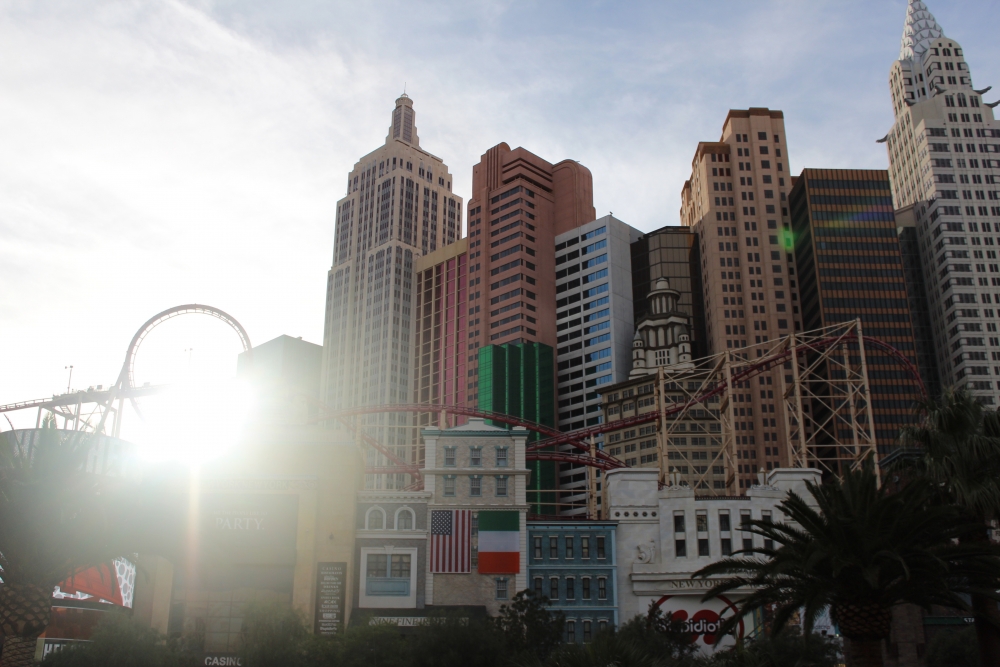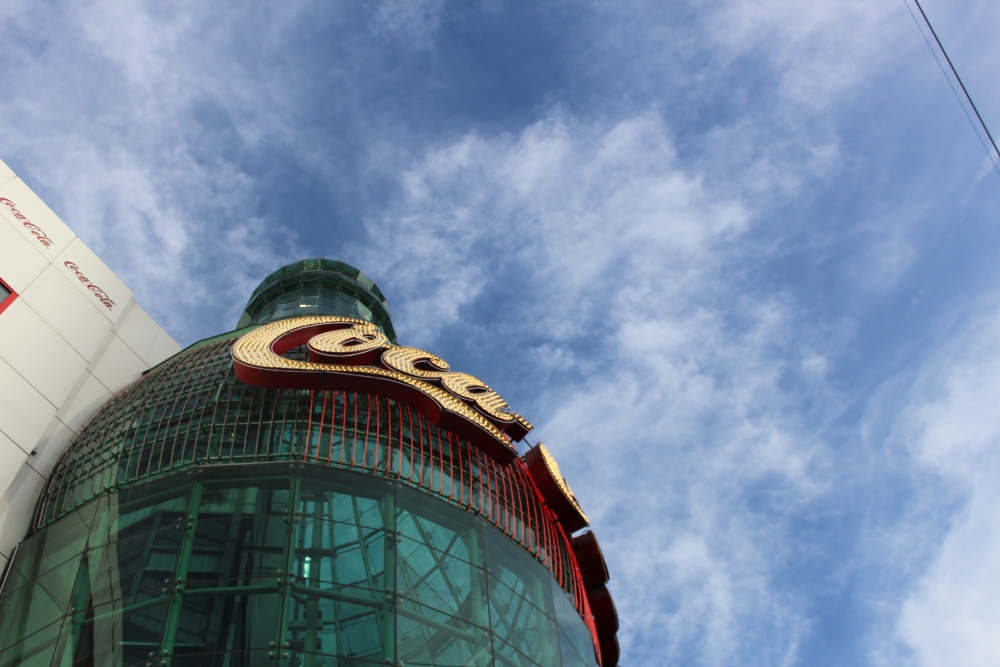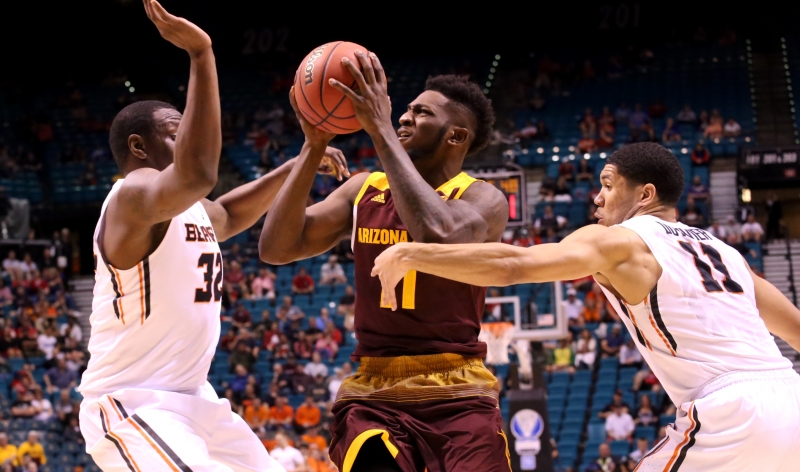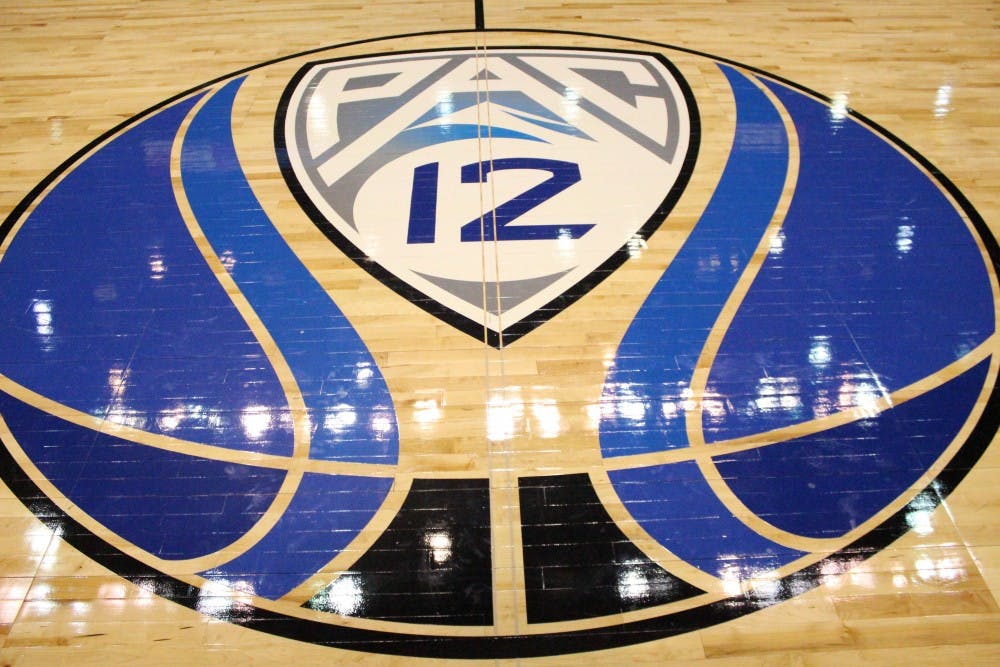LAS VEGAS — Three hundred and nine miles northwest of Wells Fargo Arena lies the self-proclaimed “Entertainment Capital of the World,” a destination that played host to the Pac-12 men’s basketball tournament and entertained thousands of young college students from across the country on spring break.
The allure of Las Vegas is implicit — it seems to have become the default birthday escapade for U.S. 21-year-olds — and it's clear that Vegas' hosting of the Pac-12 tourney is commercially appealing.
Put simply, the temptations exist to participate in a culture that has in some degree spread to almost every major U.S. city. However, the bold, loud and bright corporate branding of downtown Las Vegas has no equal this side of the Mississippi River.
As I saw the skyline from a distance, heading north on Interstate 515 on our drive from Phoenix on Wednesday afternoon, I wondered what vision led to the development of such a ubiquitous desert oasis. The gambling mecca of the U.S. has become synonymous with betting on sports, and its visitors often share the same fervent passion for the entertainment industry.
New York — which has a profound influence on The Strip, with facsimiles of the Empire State Building, Statue of Liberty and other Long Island treasures — is widely referred to as the city that doesn’t sleep.
But in a place already marked by several hyperbolic descriptors, it’s probably fitting that insomniac central is actually situated in the Mojave Desert.

Naturally, I was expecting a late work night at the conclusion of ASU’s game — it was Thursday by the time The State Press had left the arena.
The Strip's infamous gentlemen’s club promoters and hustlers were assertive in broad daylight, and perhaps tinged with desperation and cynicism as the streets became less saturated — but never empty — with each passing hour.
The student media contingent I traveled with was approached several times with invitations to socialize with Las Vegas’ finest. The language they used was not particularly fit to print, though in some cases, they were kind enough to offer “free limo and cover charge” to their establishment.
Instead of engaging with strangers handing out cards inviting us to such places, we politely declined and instead spent considerable time wandering around searching for a decent place to eat (This was much more difficult than I thought it would be, even after 2:30 a.m.).
Gaudy neon signage, solicitors, trucks with giant banners tasked with one mundane purpose of driving up and down The Strip to divert as many eyeballs as possible, and new music playing about every 25 feet or so were all in a fierce battle to compete for your attention. This level of sensory overload was the visual equivalent of the shot of espresso I sampled from the coffee bar in the media dining room, if someone mixed in about six fluid ounces of concentrated doses of Red Bull and Monster.
Also, there’s a Coca-Cola store with a four-story Coca-Cola bottle that contains an elevator, and M&M’s World is Coke’s nextdoor neighbor on Las Vegas Boulevard.

We marveled at the spectacle of the Bellagio Hotel fountain as Elvis serenaded us with the Viva Las Vegas anthem.
We walked through several casinos, each one as bland and invariable as the next, even in the most glamorous of hotels. What struck me was the juxtaposition of just how remarkably average and ordinary the people were roaming about, and mingling in places that most would assume only admitted those in the company of the ultra elite.
Clocks were noticeably absent in most public places, though if you had to, you could gauge the passing of time by observing that the fountain display activated every 15 minutes.
Eventually, we settled on eating at Fatburger, which was a passable choice with the exception of the added cost of a dollar if you wanted cheese — seriously!
Casual quality dining options at reasonable price ranges are not this city’s strong suit. And it should not be expected in a place kept afloat by spending in gluttonous excesses on gambling, luxury hotels, designer fashion and cars.
That said, when it came to main event of the week, many fans might not have felt that their initial investment was not worth the level of basketball they expected to see.
On Thursday, fans were treated to a pair quarterfinal thrillers between No. 1 seed Oregon vs. No. 8 Washington and No. 5 Colorado vs. No. 4 Arizona. Every Wednesday game was decided by double digits, and the higher seed went on to win every game of the tournament.
Fans from nearby Utah and Arizona (the MGM was nicknamed “McKale North” because of the Wildcat faithful) filled most of the seats for the games not involving those fanbases, somewhat masking meager turnouts.
The loudest fans inside the MGM Grand Garden Arena during ASU’s first round matchup with Oregon State were Arizona fans; one Wildcat couple was pictured on the big screen holding signs reading “Go Beavs.”
Thursday did not disappoint, with a primetime Utah-USC matchup that gave Pac-12 basketball fans a reason to stick around the arena, even if their team had been eliminated on Wednesday.
The games got better as the week neared its end, as Arizona-Oregon and Utah-California went down to the wire, setting up a Utah-Oregon championship game in which the Ducks dispatched the Utes for the third time this season, another reminder of Oregon’s status as a national power.
The Pac-12 and Commissioner Larry Scott announced Friday that it will keep the tournament in Las Vegas through the next three seasons, moving across the street from the MGM Grand Garden Arena to the new T-Mobile Arena, which will officially open in April.
“The success of this event isn't just what happens inside the Garden Arena,” Scott said at Friday’s press conference. “It's what happens outside and The District and the buzz, I think, throughout Las Vegas, but particularly around the restaurants and the pregame and postgame as well. I think when you think about a successful event, it's broader than what happens from the opening whistle to the closing whistle."
"So it's something — and this is a very unique set-up here that we appreciate. What we're really excited about, and maybe (Anschutz Entertainment Group President Dan Beckerman) can speak to it as well is how, I think, the philosophy around the T-Mobile Arena really thinks about that experience as well, not just inside the arena, but outside the arena, and how it connects to the strip, and all that as well.”

What do the players think? Admittedly, those that grew up in Sin City, like Oregon State guard Gary Payton II, USC guard Julian Jacobs, Arizona forward Ray Smith, Stanford twin brothers and guards Marcus and Malcolm Allen might be biased toward their hometown. ASU’s Savon Goodman transferred from UNLV after his freshman year.
“The fact there are four conference tournaments out here, it creates an exciting basketball vibe for a week, and that’s great for Vegas,” Jacobs told the Las Vegas Review Journal. “I think the players enjoy it.”
The players very well might. So do the thousands of fans who were in town for the Pac-12 and Mountain West basketball tournaments, and visitors in general.
From a business standpoint, it’s hard to argue with Las Vegas as a location, even if Los Angeles or San Francisco could pull off an event of this size fairly easily. And evidently, the draw of the City of Lights is enough to line the streets of The Strip with fans from every Pac-12 school.
While the caliber of basketball at this tournament ultimately proved to be terrific after a slow start, it didn’t take me 48 hours to determine that Las Vegas isn’t my idea of fun.
Related links:
ASU men's basketball managing expectations in time of transition
ASU men's basketball eliminated, overwhelmed by Oregon State
Reach the reporter at smodrich@asu.edu or follow @StefanJModrich on Twitter.
Like State Press Sports on Facebook and follow @statepressport on Twitter.




